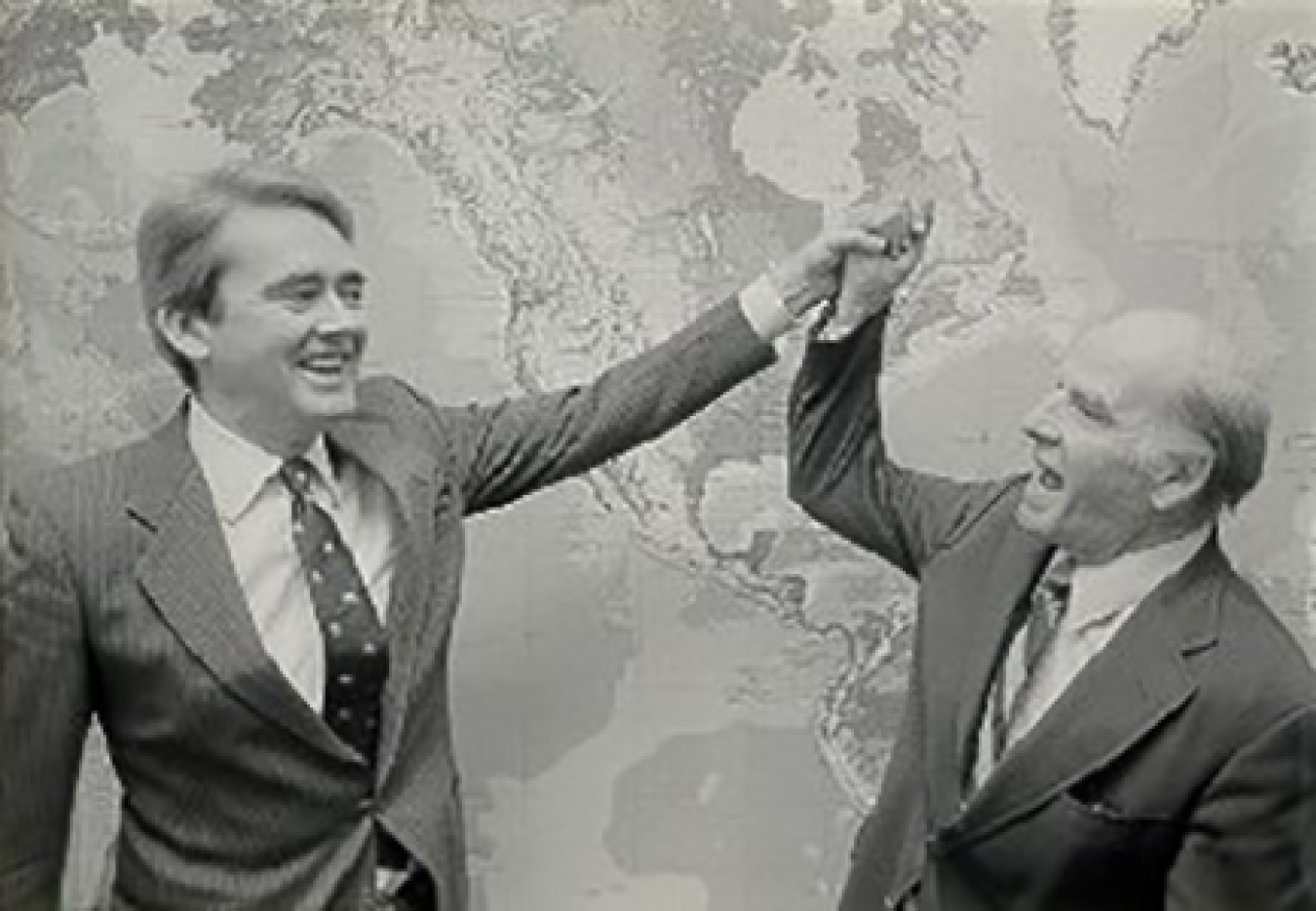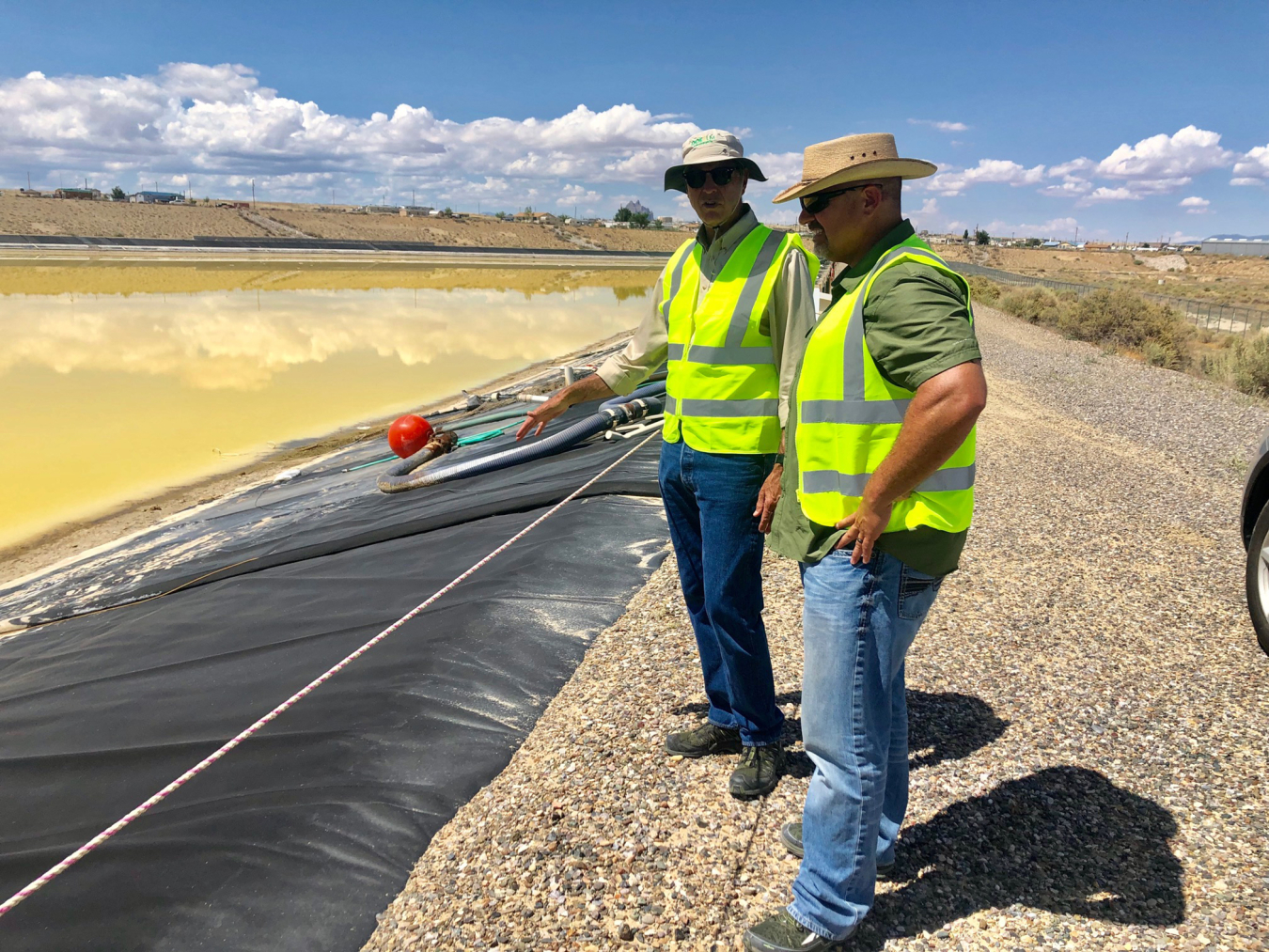LM’s Shawn Montgomery credits his reverence for the environment to serving alongside Native Americans at home and abroad.
April 22, 2021
“The ultimate test of man's conscience may be his willingness to sacrifice something today for future generations whose words of thanks will not be heard,” said U.S. Senator Gaylord Nelson, the founder of Earth Day, at its launch in 1970. The Wisconsin senator was appealing to the nation’s sense of legacy as he endeavored to raise awareness about environmental issues.
For Shawn Montgomery, that awareness and being environmentally conscious is more than a personal belief. It is a professional commitment. As the public participation specialist for the U.S. Department of Energy (DOE) Office of Legacy Management (LM), Earth Day is simply a reminder of LM’s year-round mission to protect human health and the environment.
“It is our responsibility to look at things in the past and ensure that they don't affect the future. That's what I love about the Office of Legacy Management,” Montgomery said.
The legacy LM is responsible for consists of historically significant sites around the country related to the Manhattan Project, the Cold War nuclear weapons complex, and the nation’s early atomic energy program. Some of these former nuclear disposal sites are on tribal lands where Montgomery leads a team in partnering and consulting with tribal members to perform LM’s mission. Montgomery regards this aspect of his role as both humbling and awe-inspiring.
“To understand the Native American perspective and their relationship with the Earth, you have to see it as all-encompassing. It is a top-down, bottom-up relationship with water, the air, the land, and the living creatures who inhabit the Earth. And humans are just a small part of that relationship,” Montgomery said.
Montgomery’s appreciation of that relationship has been honed over years of collaboration with tribal members at home and abroad, initially as a combat medic with the Army’s 1st Infantry Division and later when he went to work for the U.S. Department of Veterans Affairs as a certified Tribal Veterans Representative. During his deployment to Iraq, he forged his first friendships with Native Americans. As Montgomery learned about his friends’ beliefs and their connection with the Earth, he began to understand how part of that sacred bond was service to country.
“One of the things we talked about a lot was how vastly different the way Natives look at the Earth from the non-Native perspective. How Mother Earth is ‘the Creator,’” Montgomery said. “It's a foundational life trait that was just not bred into some of us.”
Those conversations, he says, bettered his understanding of different Native American cultures and inspired him to support underserved tribal communities. In 2019, Montgomery was appointed public participation specialist with LM, a job he believes he was meant to do.
“Being the face of a federal organization comes with a massive responsibility, not only to our country, but especially to the Navajo Nation and the many other tribal lands and communities we have promised to serve,” Montgomery said.
One of those communities is in Tuba City, Arizona, 85 miles northeast of Flagstaff. LM’s Tuba City site is on the Navajo Nation and in close proximity to the Hopi Tribe, where nearby radioactive mill tailings, caused by the processing of uranium ore in the mid-20th century, contaminated groundwater in a concentrated area. Bernadette Tsosie, LM Tuba City site manager, who is Navajo herself, is encouraged that indigenous expertise is being sought for site management.
“I've worked with tribes my entire career as a federal employee, and I’ve seen the difference it makes when tribal governments are engaged, as we're implementing some of these ideas or remedies at the project level,” Tsosie said.

Through quarterly meetings, outreach events, and ongoing conversations with federal and tribal partners, Montgomery and his team are making sure Native recommendations are heard by DOE.
Specifically, he and his team welcome the traditional ecological knowledge of the Navajo and Hopi Tribes, expertise the tribes have gleaned during hundreds of years of direct contact with the environment. The intent, he said, is to balance the technical nature of LM’s work with the wisdom of tribal beliefs.
Bill Frazier, an LM employee and a member of the Navajo Nation, recognizes that these deeply ingrained beliefs are difficult to explain. He references the Navajo word, hózhó, as an example. Loosely defined as walking with nature, it embodies the idea of striving for balance and harmony together with beauty and order, the essence of Navajo philosophy.
“Being a Native American and working for the Office of Legacy Management, where we have the responsibility of environmental stewardship, is restoring that balance with nature,” Frazier said.
Frazier said the effort to bridge that cultural gap is worthwhile. In fact, he was involved in those efforts at LM’s Riverton, Wyoming, Processing Site, located on the Wind River Reservation. LM conducted a supplemental risk assessment there to determine whether current site conditions were protective of human health for traditional Arapaho uses of plants, animals, and objects.
“Nothing is mentioned in the existing risk assessment that addresses the cultural uses of plants and animals in the area of the site,” Frazier said. “The study’s results showed the remedies are protective, thus preserving the Northern Arapaho’s traditional ecological resources within the site’s boundaries.”
“The application of tribal ecological knowledge is one of those things we constantly strive for in our organization,” Montgomery said. “We had a scholar from the Hopi Tribe scheduled to train non-Native LM team members on cultural awareness before COVID.”
Jennifer Grossheim Harris, public affairs lead for Navajo Nation sites with the LM Strategic Partner, said the team continues to prioritize the cultural context vital to overseeing a site, while simultaneously respecting and honoring the people who live near it.
“They are connected to the land that we as westerners look at very, very differently. We own land. Our tribal partners consider themselves part of the land,” Harris said.
Montgomery said these differences offer LM a unique learning opportunity.
“When I was going through my tribal veterans training, I learned American Indians and Alaska Natives serve in the armed forces at five times the national average. If you drill down on that, per capita, they are the most committed nationality to serve our country,” Montgomery said. “I’ve learned so much from our tribal partners, and it’s my job to ensure I continue this mindset, because they’ve had a lifetime to gather and understand their relationship with Mother Earth, but I feel like I am just getting started.”


